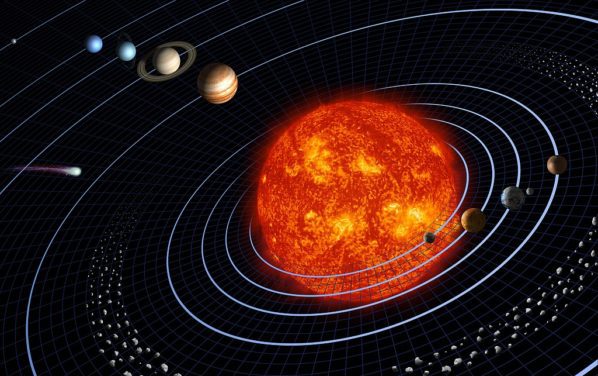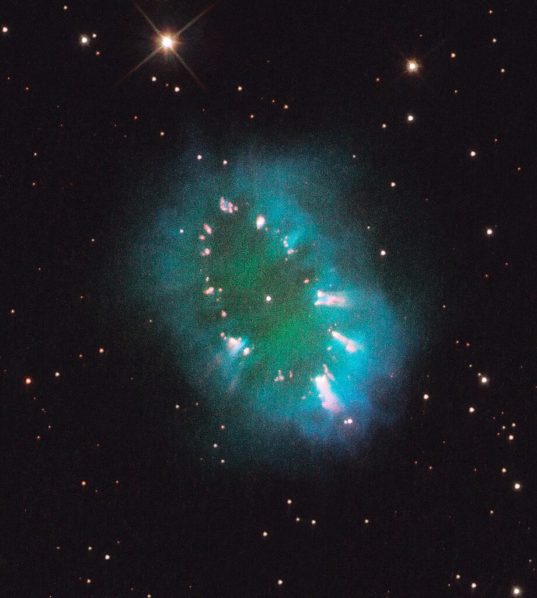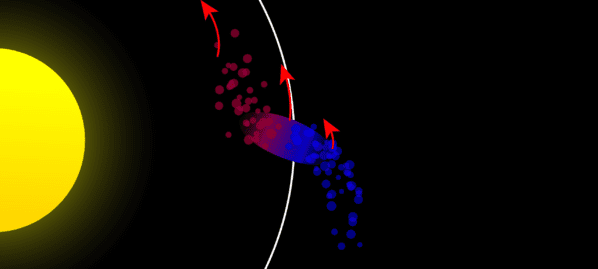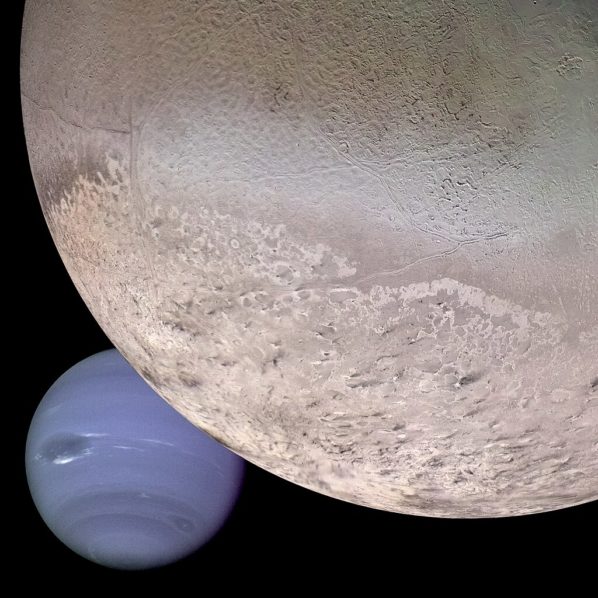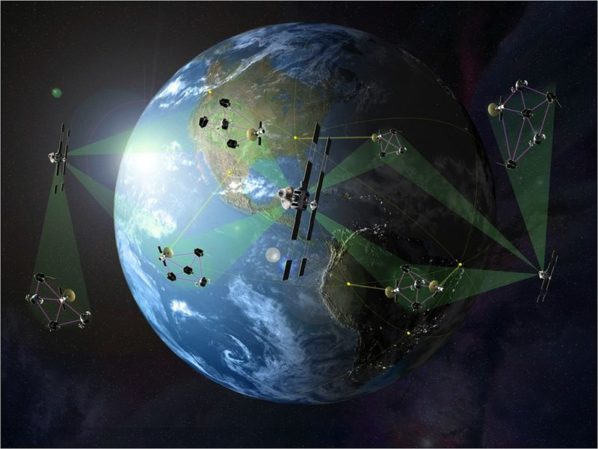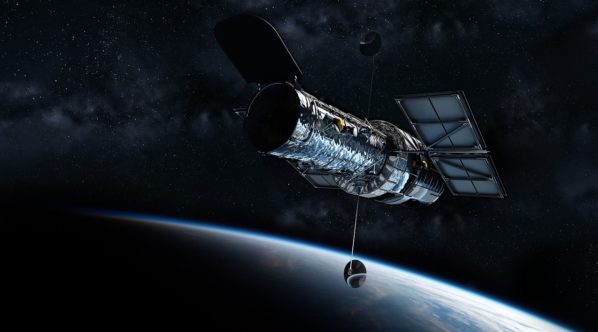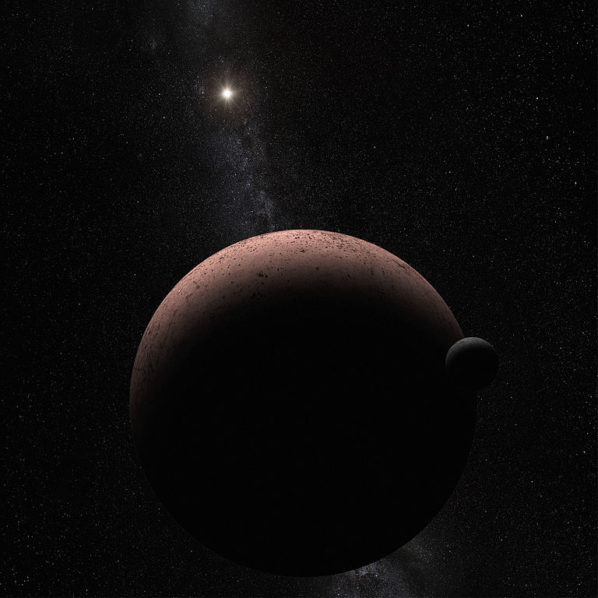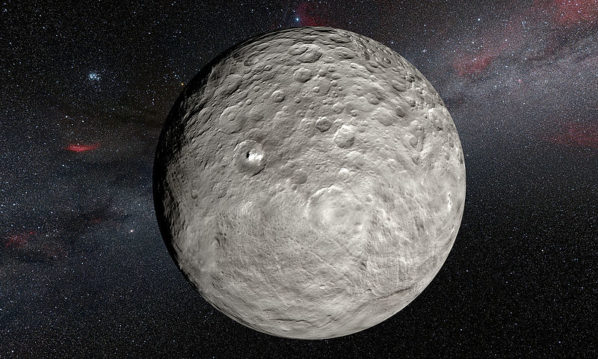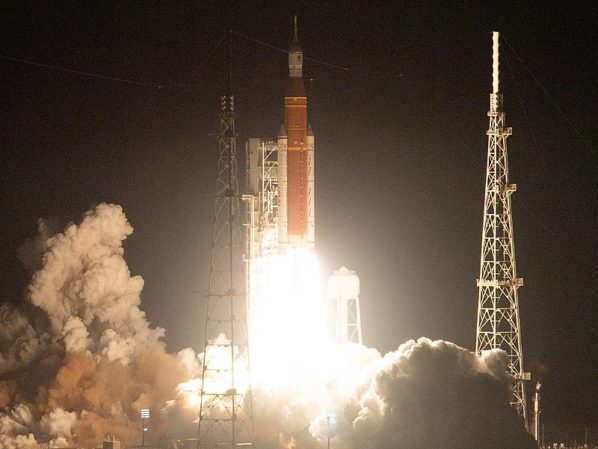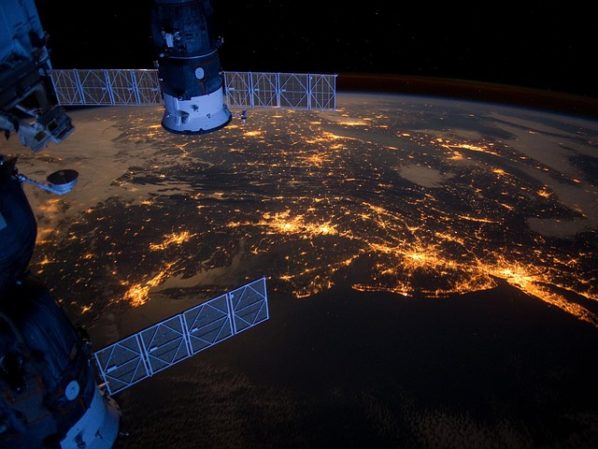Hill Sphere: Discover the Gravitational Realm of a Celestial Body
Uncover the gravitational dynamics of celestial bodies within and beyond Hill spheres, revealing insights into practical applications and cosmic phenomena.
The Necklace Nebula: A Heavenly Jewel in Our Universe
The Necklace Nebula, a stunning planetary nebula in Sagitta, formed as a star engulfed its companion, crafting a captivating celestial jewel 15,000 light-years away.
The Roche Limit – What Happens When a Moon Gets Too Close?
The Roche limit is a celestial boundary where moons face destruction due to tidal forces, forming rings or colliding with planets. It reshapes our cosmic knowledge—a fascinating frontier to explore!
Why Do We Think Triton Is a Captured Moon?
Discover the key evidence suggesting that Triton, Neptune's moon, is a captured moon. Explore its unusual orbit, composition, and unique features, uncovering the mystery of its origins.
What’s the Difference Between LEO, MEO and GEO Satellites?
As of the beginning of 2023, nearly 15,000 satellites are orbiting our planet. With so many orbiting bodies circling the Earth, it's a miracle they don't crash into each other, right? It might seem like magic, but in reality, it's because they aren't all orbiting at the same height. Let's take a closer look at what LEO, MEO and GEO satellites are, and why more companies are investing in LEO and MEO satellites to support space exploration.
Common Tools Used to Gather Data in Space
As a species, we're working on expanding our horizons — literally — by making our first forays into outer space. Despite this push toward space exploration, there is still a lot about the universe around us that we don't know, and a lot that we don't even know to ask about yet. On top of that, much of the data that we could be collecting from outer space is invisible to the human eye. What tools are scientists using to gather data in space?
A Good Time to Observe Dwarf Planet Makemake
On March 29, we have a great opportunity to observe the dwarf planet Makemake. It will be at opposition, which means it will reach the highest point in the sky at around midnight and be opposite to the Sun. At around the same time Makemake will also reach its closest point to the Earth (perigee) at a distance of 51.77 AU. Its peak brightness will be an apparent magnitude of 17.1, which makes it the brightest trans-Neptunian object after Pluto.
A Good Time to Observe Dwarf Planet Ceres
On March 21, we have a great opportunity to observe the dwarf planet Ceres. It will be at opposition, which means it will reach the highest point in the sky at around midnight and opposite to the Sun. At the same time Ceres will be closest to the Earth (perigee) at a distance of 1.59 AU. At this time it will be the brightest, with an apparent magnitude of 6.9. Look in the constellation of Coma Berenices with binoculars or a telescope.
Artemis I Launch a Great Success, According to NASA Engineer Kristine Ramos
Despite some delays, the highly anticipated kick-off to NASA's Artemis program finally debuted with the launch of Artemis I. This unmanned mission to orbit the Moon is the first test of the Orion spacecraft carried by a Space Launch System (SLS) rocket.
How Are Spaceflight Inc.’s Sherpa Vehicles Improving Satellite Launch?
Traditionally, satellites were simply strapped to larger rockets designed to push them into higher orbits, but this can be an incredible waste of fuel and resources. However, Spaceflight Inc.’s Sherpa vehicles may help change that. So what are Sherpa vehicles, and how are they supporting satellite launches?
The Great Opportunities of the Galileo Satellite Navigation
More than 2,000 satellites are orbiting the Earth at this very moment. They are used for communication and many other purposes. This article covers different aspects of satellite uses in navigation, with a strong emphasis on navigation. Then it looks into the Galileo Satellite Navigation System.
Using of Satellites in Wireless Communication
What are satellites used for? Our tech and communication relies mostly on these devices. Explore all uses of wireless communication and find out if too many manmade devices orbiting the Earth poses any dangers.

